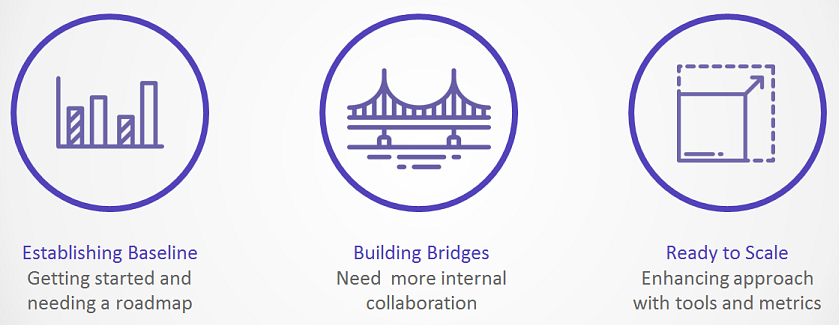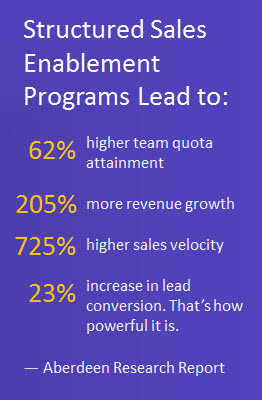Build Bridges to Support Content Success
Register now for the upcoming
Press Pause for Sales Enablement webinar.
“63% of executives say that organizational silos & lack of integrated systems are the two biggest obstacles standing in the way of improving customer experience.” — Lithium
As noted in our previous post, sales enablement effectiveness is contingent upon the teams in charge of sales, marketing, web, content, analytics, and customer service aligning and sharing the right levels of information when it is needed across groups.
Have you connected your infrastructure components (operations, technology, insights) so that they are working together effectively? Consider as well that even if you have components in place, you must ensure that they are not only functioning independently, but across disciplines. Key aspects include:
- Alignment between sales strategy, marketing strategy and technology roadmaps.
- Knowledge of your customer.
- Content planning and content performance reviews.
- Content optimization focusing on supporting business objectives.
- Access to the right analytics and dashboards that effectively report them.
Connective Tissue
But how to create the ‘connective tissue’?
- First, you need arrive at a shared vision of the sales lifecycle between sales and marketing. Audit your processes and clarify the roles and responsibilities of each role and process.
- Identify the gaps, issues, and pain points.
- Dig into how marketing campaigns are influenced by sales strategy.
- Create or identify a roadmap that shows how the CMO and CRO (Chief Revenue Officer) collaborate and supports sales enablement.
- Pull together an integrated metrics approach so you can measure success and identify areas for improvement.
An integrated sales and marketing approach will help to provide the context for building bridges and to articulate goals and objectives that are measureable. You can then determine where they apply in the customer lifecycle. Ask these key questions:
- Does everyone agree on the customer touchpoints?
- Does everyone understand and agree on their roles as part of the customer interaction?
- Do you have the necessary assets to support those interactions?
The ultimate goal is to push the customer from one stage of the lifecycle to the next, and continually support them in the process.
Sales Enablement Roadmap
You have the vision, goals and objectives. Now, identify what you need to get to the next level by creating a roadmap that defines the path from current state to future state. It should include an overarching vision that accounts for everything: short-, mid-, and long-term efforts. An effective roadmap contains the following:
- Processes. Aligned sales enablement-related processes between business units.
- Content. Compelling and relevant content mapped to the customer journey.
- Systems. Technology to support content production, delivery and measurement.
- Skills. Internal or external capabilities to support sales enablement processes and associated content creation.
- Tools. Applications or practices that teams use to drive or manage content operations.
- Governance. Operational processes, people, and tools, required to support the ongoing success of the strategy. This includes governance by committee and governance by standards and tools.

Sales & the Content Roadmap
As you align your content roadmap with the sales enablement roadmap, ask yourself these questions. They’ll keep you honest as you involve sales.
- Have you actively engaged sales in the process of building the content roadmap?
- Have you established a process to continue tapping their knowledge and insights?
- Have you socialized the approach and established regular touchpoints?
- Have you put formal training in place to make sure the content and topics will be integrated into the sales process?
- Have you engaged sales advocates who will help inculcate the philosophy and keep the bridge between sales and marketing strong?
Culture & Change
The activities described above will require persistence, political savvy, and diplomacy. To protect against cultural roadblocks, define a governance process that establishes roles and responsibilities. Engage with strong leaders who can advocate for change adoption through a collaborative process. Some business silos may prevent effective communication. Try to identify those early and work with business unit teams to open lines of communication.
Often, the key to effecting change is to engage stakeholders and determine how ownership issues can be resolved. With leadership buy-in and a defined operations model, staff can focus on customers and their content needs. A strong governance team and ongoing participation mechanisms, such as workshops, training sessions, and working meetings, will keep everyone engaged.
Join us on October 10th to learn more.


 When considering an enterprise approach to sales enablement, it is imperative to “Press Pause” so that organizations can take the time they need to ensure they can set up their sales enablement operations for continual success.
When considering an enterprise approach to sales enablement, it is imperative to “Press Pause” so that organizations can take the time they need to ensure they can set up their sales enablement operations for continual success.